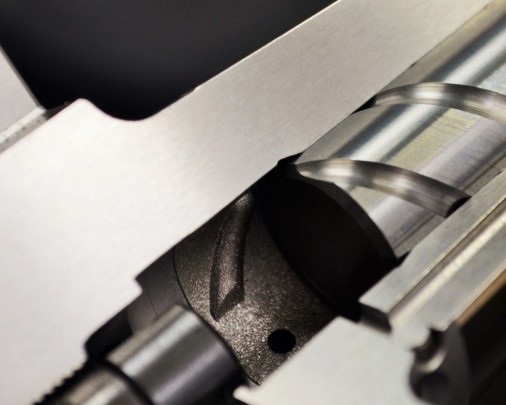 GWS Tool Group, a custom cutting tool manufacturer, and Haimer USA, a producer of tool-holding technology, signed a U.S. licensing agreement for Haimer’s Safe-Lock anti-pullout system.
GWS Tool Group, a custom cutting tool manufacturer, and Haimer USA, a producer of tool-holding technology, signed a U.S. licensing agreement for Haimer’s Safe-Lock anti-pullout system.
“We are very happy to have formed a partnership with GWS, undoubtedly one of the fastest growing cutting tool manufacturers in the business,” said Brendt Holden, president of Haimer USA. "Their high-quality milling solutions are perfectly suited for the Haimer Safe-Lock system. I fully believe GWS aerospace customers will welcome the security, balance, and precision of the Safe-Lock System that will ultimately ensure they can maximize their productivity.”
GWS CEO, Rick McIntyre said that “Partnering with Haimer to provide the industry standard in pullout protection, Safe-Lock, further strengthens our ability to deliver optimized milling solutions to our customers.”
Since its creation, the Safe-Lock system has grown rapidly in the U.S. market across all industrial sectors, the company said. The tool holding system, which emerged from the requirements of heavy-duty machining, initially made a name for itself in the aerospace and energy industries, but is now found in use in other industries and milling applications. In particular, the increase in customers utilizing high-efficiency dynamic milling strategies developed using CAM software, have found Safe-Lock to be an absolute necessity.
For more information on Safe-Lock, visit www.haimer.com.
For more information on GWS Tool Group, visit www.GWSToolGroup.com.
Contact Details
Contact Details
Related Glossary Terms
- computer-aided manufacturing ( CAM)
computer-aided manufacturing ( CAM)
Use of computers to control machining and manufacturing processes.
- gang cutting ( milling)
gang cutting ( milling)
Machining with several cutters mounted on a single arbor, generally for simultaneous cutting.
- milling
milling
Machining operation in which metal or other material is removed by applying power to a rotating cutter. In vertical milling, the cutting tool is mounted vertically on the spindle. In horizontal milling, the cutting tool is mounted horizontally, either directly on the spindle or on an arbor. Horizontal milling is further broken down into conventional milling, where the cutter rotates opposite the direction of feed, or “up” into the workpiece; and climb milling, where the cutter rotates in the direction of feed, or “down” into the workpiece. Milling operations include plane or surface milling, endmilling, facemilling, angle milling, form milling and profiling.


